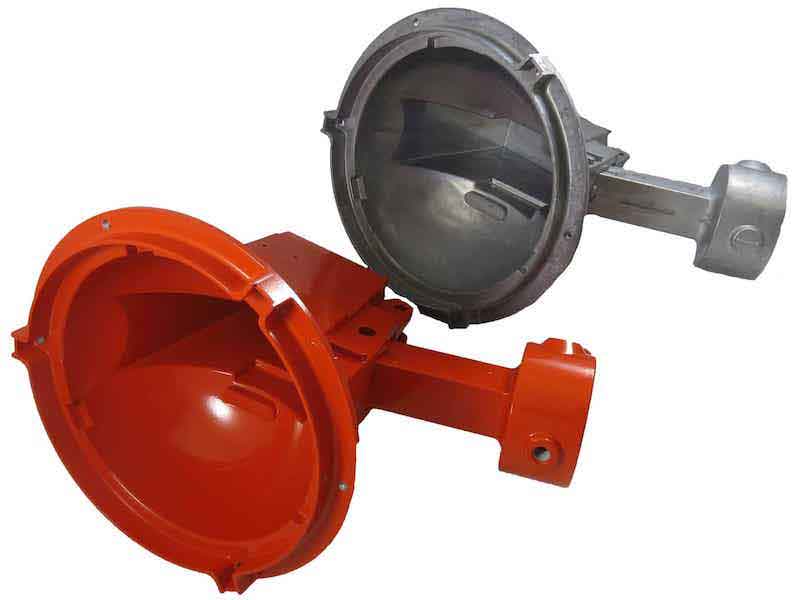When the team at die-caster Chicago White Metal talks with a client about a new project, finishing requirements are always very high on the list of topics to discuss early on.
CWM is a full-service die casting company that specializes in aluminum, magnesium, and zinc high-pressure die castings and associated services. With a strong focus on highly cosmetic applications, it is critical to design quality into a component up front so that the end product will have the finish and appearance which meets the client’s requirements.
 Tom MrockWhile CWM has no finishing operations at its sprawling campus in Bensenville just outside of Chicago, their Purchasing and Product Finishing teams collaborate with myriad outside finishers, which CWM contracts with to put the final touches on the specifications for finishing of the die castings it manufactures for their global clientele.
Tom MrockWhile CWM has no finishing operations at its sprawling campus in Bensenville just outside of Chicago, their Purchasing and Product Finishing teams collaborate with myriad outside finishers, which CWM contracts with to put the final touches on the specifications for finishing of the die castings it manufactures for their global clientele.
Understanding the Nuances of Finishing Die Castings
The CWM Die-Cast Component OEM Quick Guide to Surface Finishing is an 8-page brochure that CWM insures manufacturers understand — and which the internal CWM salespeople and engineers — reference when starting a new die-cast product.
“There are times when you feel like you almost need artisans and craftsman performing cosmetic surgery on some castings,” says Tom Mrock, CWM’s Manager of Product Finishing. “And now you are adding extensive manual labor, which isn’t needed if you have a good knowledge from the start on what you are trying to finish.”
For most die casters, there are three basic reasons why a finish is needed on a part:
- In order to meet cosmetic and decorative appearance requirements.
- To enhance resistance to wear.
- To provide a protective barrier against environmental or galvanic corrosion.
 In certain cases, die castings are also called upon to meet very special shielding specifications or special pressure tightness requirements. When shielding requirements are particularly critical — with special designs or products subject to extreme abuse — surface plating can be used to achieve such optimum specifications.
In certain cases, die castings are also called upon to meet very special shielding specifications or special pressure tightness requirements. When shielding requirements are particularly critical — with special designs or products subject to extreme abuse — surface plating can be used to achieve such optimum specifications.
Likewise, when 100% pressure tightness is needed, impregnation can be performed via a post-casting sealing process under a vacuum that brings organic material into the surface and subsurface pores of a die casting.
The CWM design team has learned over the years that die castings are one of the most difficult substrates on which to add a finish that will meet certain stringent specifications, and that is why some finishers shy away from taking on such work.
It is also a major reason why CWM is so careful to work with OEMs and parts manufacturers to make sure the finishing process is taken into consideration very early on in the design process.
“The die caster must know what finishing requirements are trying to be achieved as early on in the project as the start of tooling design,” Mrock says. “And our clients appreciate that. It is our responsibility to educate them and let them know that if they specify a high-gloss paint or powder with no texture on an aluminum die casting, then the raw die casting will not come out of the tool looking Class-A; the finishing will make it Class A.”
85 Years of Experience in Die Casting
 Tom Mrock shows castings to visitors to CWM, which was founded in 1937 in Chicago by Walter G. Treiber Sr. and relocated to Bensenville in 1977.Founded in 1937 in Chicago by Walter G. Treiber Sr. and relocated to Bensenville in 1977 under the steady guidance of Walter Treiber Jr., CWM has 85 years of experience in die casting, and the ensuing finishing processes on aluminum, magnesium, and zinc die cast components. The company feels strongly that while the exterior finish is dictated by the required appearance specifications, the specific surface preparation called for is usually more dependent on functional design features.
Tom Mrock shows castings to visitors to CWM, which was founded in 1937 in Chicago by Walter G. Treiber Sr. and relocated to Bensenville in 1977.Founded in 1937 in Chicago by Walter G. Treiber Sr. and relocated to Bensenville in 1977 under the steady guidance of Walter Treiber Jr., CWM has 85 years of experience in die casting, and the ensuing finishing processes on aluminum, magnesium, and zinc die cast components. The company feels strongly that while the exterior finish is dictated by the required appearance specifications, the specific surface preparation called for is usually more dependent on functional design features.
For example, critical edges may require a shave trim, followed by special polishing, a chromate coating, and then the final painting. Specified tight-tolerance holes may call for acid etching or chromating followed by reaming, milling, or boring.
Not advising clients upfront of the challenges of finishing the die casting will only cause problems down the road. The CWM team has been down that road before. Upfront planning and design with respect to the appropriate finishing can help avoid such situations.
CWM spells out specifically how OEMs can avoid such finishing pitfalls by offering numerous guidelines when designing parts that will make the surface finishing stage go smoother, which is always the goal.
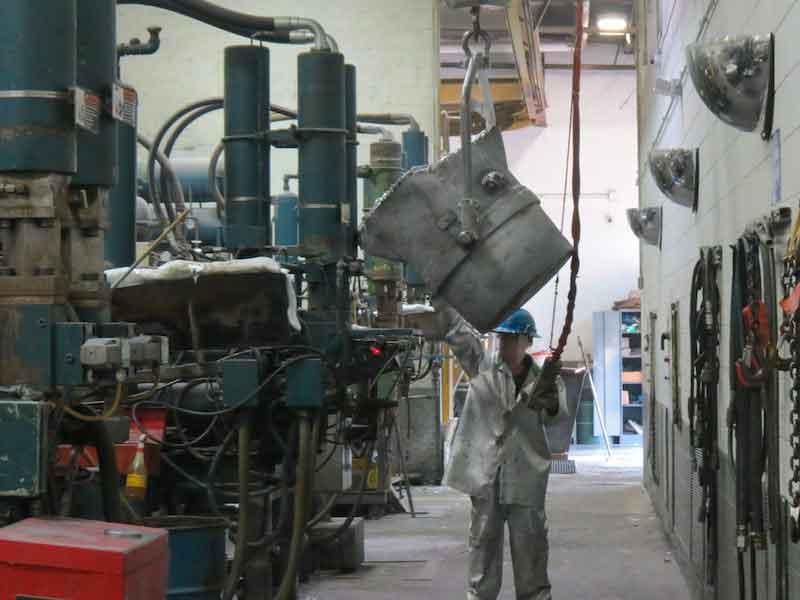 These design modifications to aid surface finishing quality are not always feasible, but where they can be made, improved results will follow:
These design modifications to aid surface finishing quality are not always feasible, but where they can be made, improved results will follow:
- Die-Cast Part Edges: Part designs that hide any trimmed edges within the final product assembly will eliminate any need for post-casting edge polishing. Early consultation on cosmetic features will assure that necessary parting lines will be placed to conceal trimmed visible edges.
- Die-Cast Holes for Machining: Design in chamfers (countersinks) or counter bores on holes to assure the integrity of the surface edge of tapped holes. Leading threads will be protected from deburring or polishing.
- Die-Cast Mounting Features: Wherever possible, create raised “shoulders” on bosses which will receive painting masks; scuffing can thus be avoided on surrounding painted surface areas during fastener torquing and mounting of mated parts.
- Die-Cast Bosses: Include correctly designed gussets to improve die fill and avoid resulting sink marks on Class-A surfaces. Short and stocky bosses are preferable to tall, thin designs to optimize metal flow and ensure the integrity of the feature.
- Die-Cast Corners: Use the maximum allowable radius for all internal and external corners to permit vibratory deburring media to reach all part surfaces. This design guideline for die-cast corners of housings is also vital to assuring the complete filling of the die cavity and maintaining the integrity of the corners of the part.
- Die-Cast Surfaces: Subtly textured surfaces can be produced as-cast on selected areas of a component by special preparation of the die-casting die. These cast-in textures are created by photoengraving techniques during die construction and are sometimes recommended for use on the underside of complex parts to aid in smooth die fill.
Deburring, Conversion Coatings, or Final Surface Finish
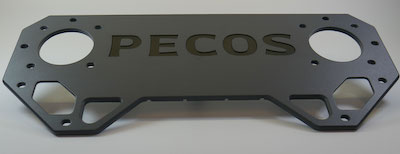 Depending on requirements to meet durability, protection, and cosmetic appearance specs, most cast components will receive up to three standard post-casting finishing steps: deburring, conversion or combined conversion-functional coating, and a final surface finish coating.
Depending on requirements to meet durability, protection, and cosmetic appearance specs, most cast components will receive up to three standard post-casting finishing steps: deburring, conversion or combined conversion-functional coating, and a final surface finish coating.
Virtually all CWM die castings go through a mechanical deburring operation after die trimming. This includes vibratory processes using a range of media types that can round sharp edges, remove burrs, loose flash, and debris, and smooth and brighten part surfaces.
That is usually followed by a conversion coating that removes any remaining oil, die-cast part release agents, and other contaminants. Environmentally-friendly trivalent clear chromium is offered as an alternative to widely used hexavalent chromium coatings and offers some corrosion resistance for aluminum, magnesium, and zinc die-cast parts in a wide range of applications.
Of course, CWM needs an array of finishers who can pull off the final finish to meet not only the customer specifications but also CWM’s very tough requirements as well. That’s when CWM’s Purchasing team calls upon a bevy of surface finishers they have worked with over the decades.
CWM has worked with painters, platers, and coaters from the East Coast to the West Coast over the past decades, always with the goal of finding the right source for the project at hand.
Praise for Aamro Corporation and Accurate Coating
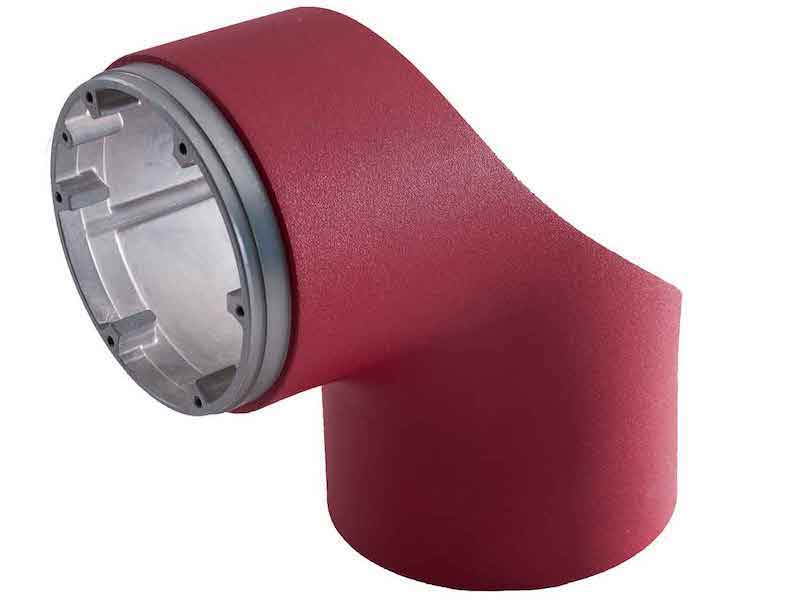 Two operations that CWM has come to rely on heavily — and which their Purchasing and Finishing teams are very high on — are vastly different in operations and capabilities but nonetheless meet the high expectations for quality that is needed to finish die castings.
Two operations that CWM has come to rely on heavily — and which their Purchasing and Finishing teams are very high on — are vastly different in operations and capabilities but nonetheless meet the high expectations for quality that is needed to finish die castings.
Nearby the CWM operation in Chicagoland is Aamro Corp., a three-generation family-owned operation in Broadview, Illinois, that specializes in deburring and polishing. A bit farther away is Accurate Coating in Grand Rapids, Michigan, which was founded in 2006 and offers a unique electrocoat process on die-cast parts that CWM raves about.
Aamro handles a lot of CWM’s polishing, vibratory finishing, and blasting, so much so that CWM considers them “an extension of our own company.”
R. John Carey founded the company in 1946, and his son Richard has now turned the operations over to his children, Sarah and John, whose vibratory and tumbling equipment can remove burrs, excess flash, and sharp edges from parts as small as a pinhead and up to 6-feet long.
But CWM feels Aamro’s true artistry is in their polishing department, where they demonstrate impeccable quality.
And while Aamro’s dedication to quality is certainly key to their success, it is their approach to open and active communication which is well received by the CWM team, who very much counts on its suppliers to maintain such an ongoing dialogue. CWM relies on Aamro to identify potential issues in the part design that they might not see and then bring those issues to the table up front for discussion
Having Inherent Polishing Instincts
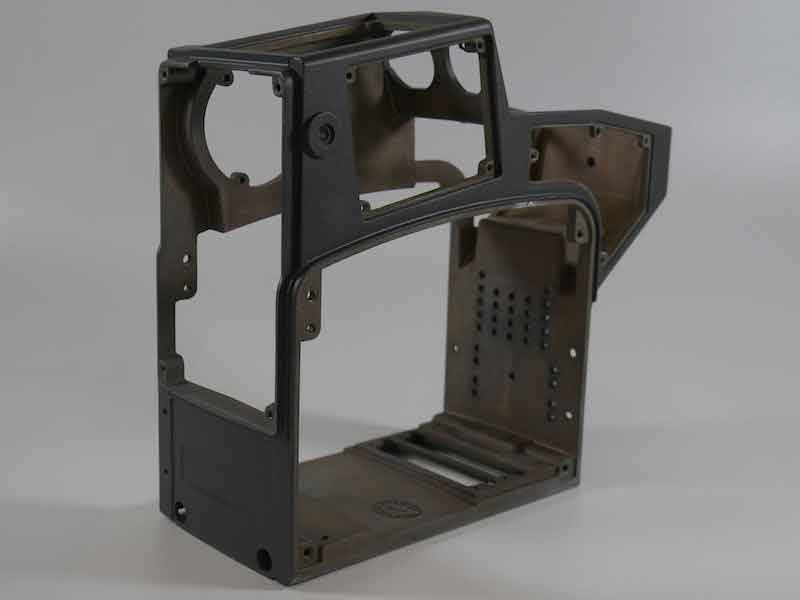 Sarah Carey says that Aamro’s five full-time polishers have an inherent instinct on just how to polish each die casting to the proper specification and do it repeatedly to various contours of the part.
Sarah Carey says that Aamro’s five full-time polishers have an inherent instinct on just how to polish each die casting to the proper specification and do it repeatedly to various contours of the part.
“Polishing is an underappreciated craft,” she says. “It’s repetitive and takes a great deal of concentration and skill. When done well, the end user probably won’t detect the amount of work that has gone into a part, but they will notice good quality.”
Yet another key to Aamro’s success is knowing when to stop “chasing” after issues, such as at the parting line of the die casting. In polishing, the key is knowing when the process is finished.
On the other spectrum from Aamro is Accurate Coating, which is relatively new to the finishing industry, having been formed in 2006. CWM learned of them from a mailing that explained how Accurate Coating could apply a matte black e-coat finish on die castings. A small group from CWM went to visit their facility and were very pleased with the near-perfection of the finish.
“Normally, e-coat has a high gloss appearance on a die casting,” Mrock says. “But what Accurate does with these parts is simply amazing. When you see it, you are blown away. And when you see how they do it with robotics and automation, you come away even more impressed.”
Owner Dave Kaspar and his son, Alex, say they set out to specialize in coating lightweight metal substrates, including magnesium, aluminum, and specialty steel. More than two million parts later, they have carved out a niche serving customers in the automotive, defense, firearms, healthcare, recreational, and technology industries.
“Die casting has very much become a niche for us,” Dave says. “You have to know what you are doing. We work a lot with magnesium, and it’s very reactionary. If you put it in anything but distilled water and it will bubble and fizzle. So if you are trying to e-coat something that is trying to react, then you might run into trouble.”
Custom Tuning Voltage and Current Profile
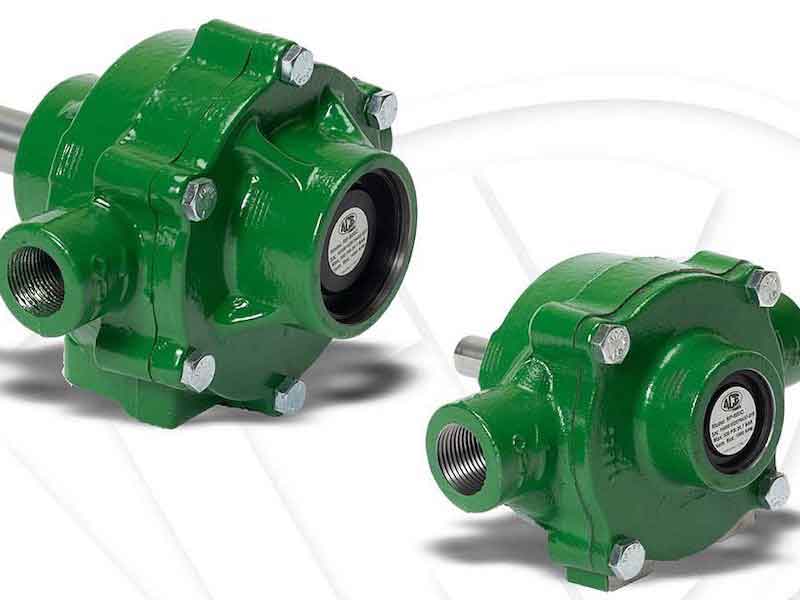 Because they coat each bar one at a time, Accurate Coating can live up to its name by custom tuning the voltage and current profile for each unique part, which sometimes cannot be accomplished on a big line.
Because they coat each bar one at a time, Accurate Coating can live up to its name by custom tuning the voltage and current profile for each unique part, which sometimes cannot be accomplished on a big line.
Alex says the alloying effect in die-cast products and certain process by-products play a role in limiting die-caster options when it comes to finishing. Those manufacturers who try to anodize or electroless nickel die-cast parts without knowing the full scope of the material will soon run into problems.
“They will certainly find uneven finishes that are just cosmetically not acceptable,” Alex says. “That is what sends die casters in search of alternatives such as powder and ecoat because you certainly get a variety of appearances with a die-cast part.”
Accurate Coating’s ability to get die-casted parts finished properly has led many OEMs and manufacturers to seek them out from across the U.S., from places such as California to Colorado to Minnesota to all places in between.
“We’re just a small shop, and certainly not a multinational,” Alex says. “But we do work with some of the largest die casters around. Sales will take care of themselves when people know what you are capable of.”
The CWM team has long felt that the overall key to finding finishing sources who can handle the toughest die castings, and having confidence that they will return the parts coated and finished to exacting specifications, is to keep searching for them and then hold on to them when they turn around great products.
“We want to work with shops that just aren’t concerned about churn and burn,” Mrock says. “CWM looks for owners who have a real passion for finishing. They aren’t there for just the dollars, but they are for the duty of turning out a great product.”
Please visit https://cwmdiecast.com, https://www.aamroco.com, and http://accuratecoatinginc.com





